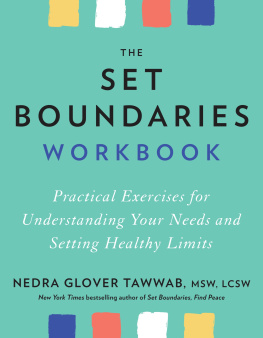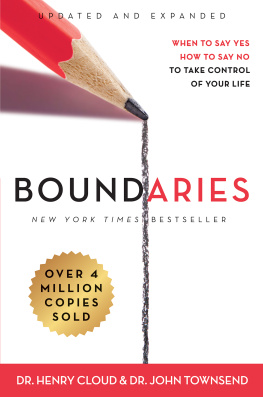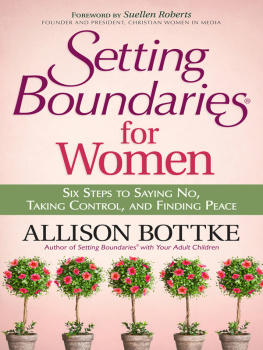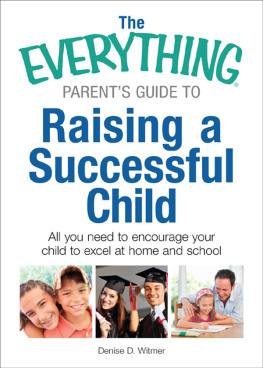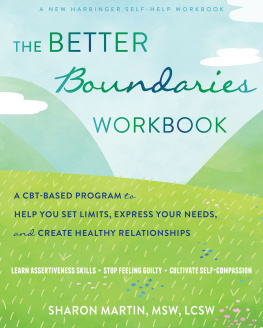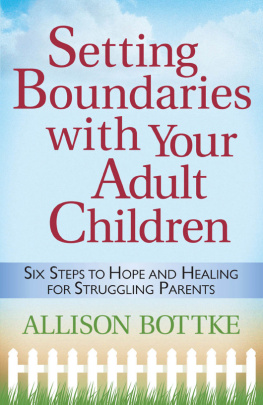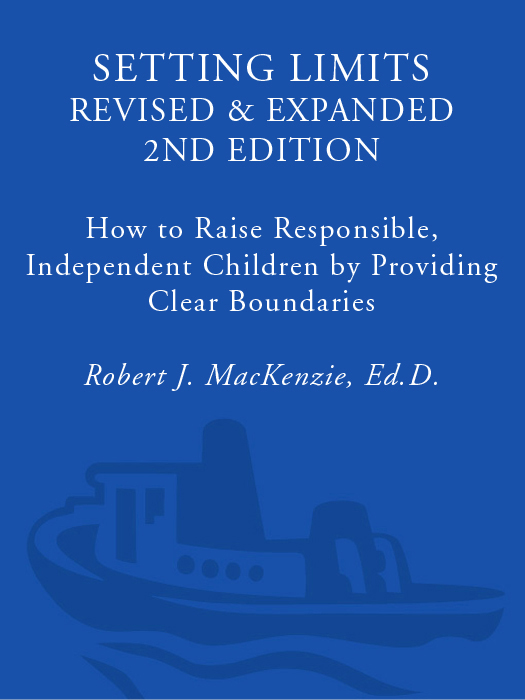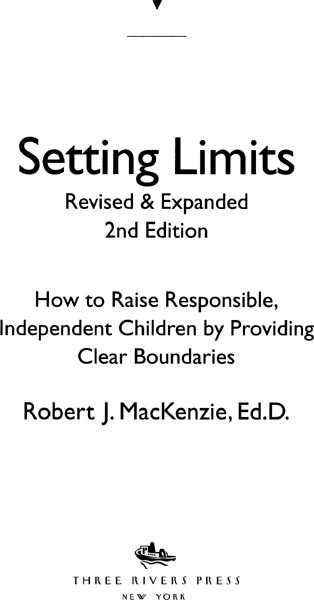
Contents
Chapter 1
Chapter 2
Chapter 3
Chapter 4
Chapter 5
Chapter 6
Chapter 7
Chapter 8
Chapter 9
Chapter 10
Chapter 11
Chapter 12
Chapter 14

Acknowledgments
This book began as a workshopactually two workshops, one for teachers and one for parentstitled TRIC: Training Responsible Independent Children. My appreciation goes to everyone who participated in these workshops over the last eight years. Your experiences, and your willingness to share them, helped to refine and improve many of the methods in this book. In many ways, you helped write this book.
Special thanks also go to those who supported my workshops in major ways and to those who contributed to the writing of this book.
To Bob Trigg and Dave Gordon, past and present superintendents of the Elk Grove Unified School District, for funding and supporting my TRIC workshops over the last twelve years.
To Chris Weberjohnson, community services program coordinator, Davis, California, for supporting my TRIC parent workshops in the Davis community.
To Ben Dominitz, publisher; Susan Silva, editor; and all the other good folks at Prima Publishing for believing in my project.
To Duane Newcomb, literary consultant, for teaching me nearly everything I know about writing a book of this type and for helping me get started.
To Karen Newcomb, my agent, for your patience, enthusiasm, and support.
To Barbara Wilhelm, Debbie Horowitz, staff, and parents at David Parent Nursery School for your suggestions on chores for preschoolers.
To Dr. Jonathan Sandoval, Professor of Education, University of California, Davis, for your technical expertise with portions of the book.
To Dr. David Vollmar for your helpful editorial suggestions and willingness to be a sounding board when I needed to test out new ideas.
To Jean Seay and Dr. Curt Acredalo for your assistance with the many charts and diagrams.
To Teri Drake, R.N., MFCC, for editorial assistance and support with the second edition.
To all the parents and children Ive seen over the years in my counseling work. Your experiences helped many of the ideas and methods in this book take shape.

Introduction
This book was written for parents, but the concepts and methods are useful for anyone who wants to improve the way they communicate and set limits with children. The methods can be applied in many different settings.
Setting Limits provides the methods you need to stop misbehavior and to teach your rules in the clearest, most understandable way. You can say good-bye to lectures, threats, punishment, and persuasion. You wont need them anymore. No more arguments or power struggles, either. Your children will understand what you mean when you learn to set firm limits and support your words with effective action. This book will show you how to do that. The methods should be a welcome alternative to the ineffective extremes of punishment and permissiveness.
In the chapters that follow, youll learn a complete and integrated approach to child guidance that is clear, systematic, and developmentally appropriate for your children, one that has been tested and used successfully by thousands of teachers and parents. The methods work, and you can use them throughout your childs development, from age two through the teenage years.
As a family counselor and parent educator for a large Northern California school district and in my private practice, I see hundreds of parents each year who have become frustrated and discouraged by their childrens misbehavior. Most of these parents are sincerely motivated to be effective in their child training. They want their children to cooperate and be responsible, but they dont know what to do to get that message across. Theyve tried yelling, threatening, lecturing, reasoning, bribing, spanking, grounding, and removing nearly every favorite toy or privilege for long periods of time, all without success.
Their methods range from extreme permissiveness to harsh punishment, but these parents all have at least one thing in common: They are having problems setting limits. They are doing the best they can with the skills they have, but their methods arent working, and they dont know what else to do. They need effective methods and an approach that teaches the rules they really intend to enforce.
Setting limits is a process parents use to teach their rules and expectations for acceptable behavior. The process is universal. All parents do it. Its the way we teach the rules of our family, our society, and, ultimately, our culture.
How do we do it? Some parents do it with harsh reprimands and punishment. Others do it with gentle reminders and persuasion. Some shift back and forth between these two extremes. Still others do it by stating their rules clearly and firmly and holding children accountable with effective action.
Our methods may differ, but we all use the same basic tools to get our message across: our words and our actions. Both send a message about our rules, but most of us are more aware of our words than our actions. Communication can break down, and often does, when either of these messages are unclear or ineffective.
For example, when our words (Clean up your room before playing) do not match our actions (child goes out to play, and mom cleans up the room), children receive a mixed message or an unclear signal about our rules and expectations. Our words say Clean it up, but our actions say You really dont have to. Whats the actual rule then about cleaning the room before playing? Of course, its not really required. If your desire was to go out and play, which message would you follow?
Or consider the nine-year-old who is sent home from school for hitting. When his father finds out, the boy receives a stern lecture about cooperation and a spanking for violating school rules. What did this boy really learn about his fathers rules? His fathers words said, Cooperate at school, but the spanking conveyed a different message: Hitting is the way we solve problems and get cooperation. What is this child most likely to do the next time he has an argument on the playground? Sure, hell continue to use the methods hes really being taught.
Many parents today are holding up the wrong signals to stop misbehavior and teach their rules. They dont realize that their stop signs do not really require stopping or that their spoken rules are different from the rules they actually practice. They are teaching their rules with mixed messages.
These mixed messages, which I refer to as soft limits in the book, achieve the opposite of their intended effect. They invite testing and resistance and set up both parents and children for conflict. The toll on children, families, our schools, and our culture is enormousbehavioral problems at home and in the classroom, power struggles, damaged relationships, and children poorly prepared to follow rules or handle freedom responsibly.


